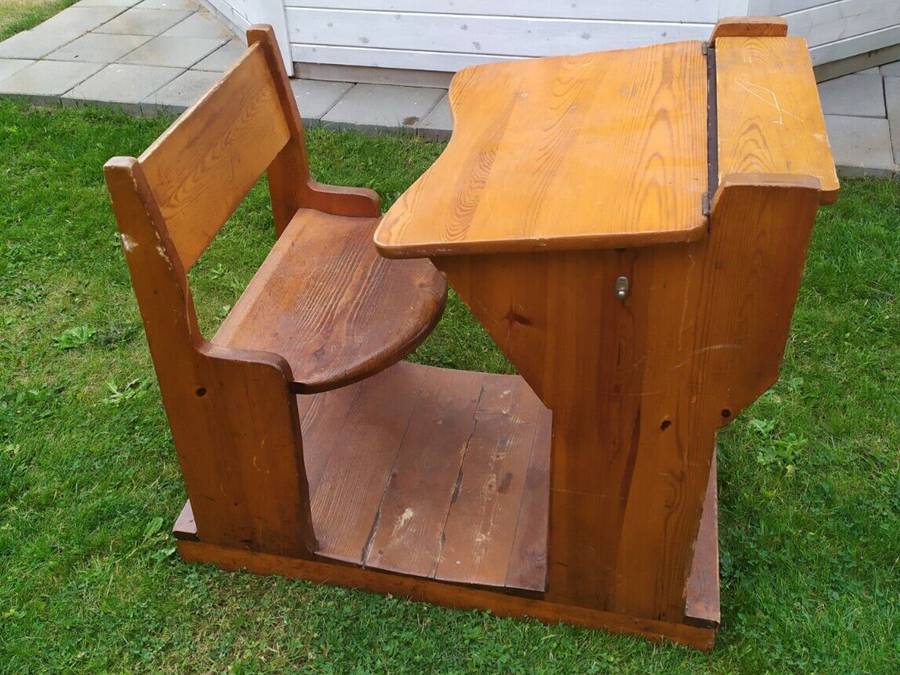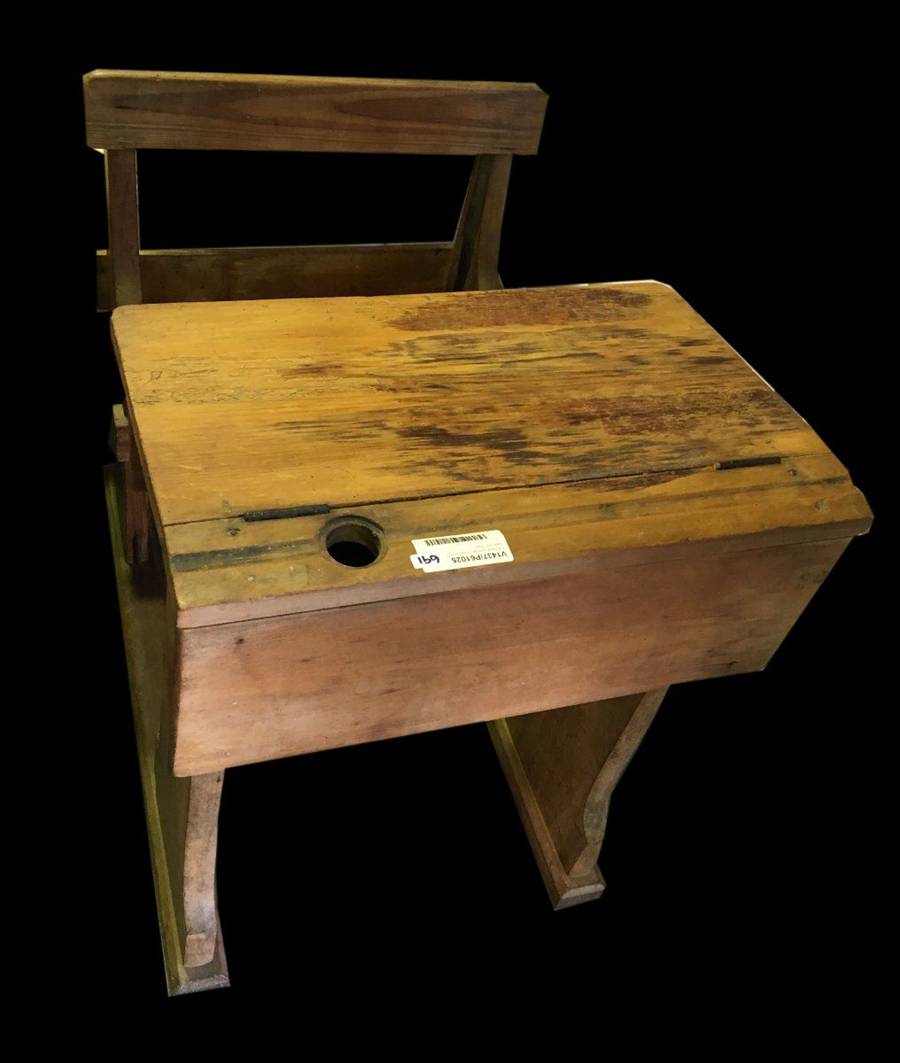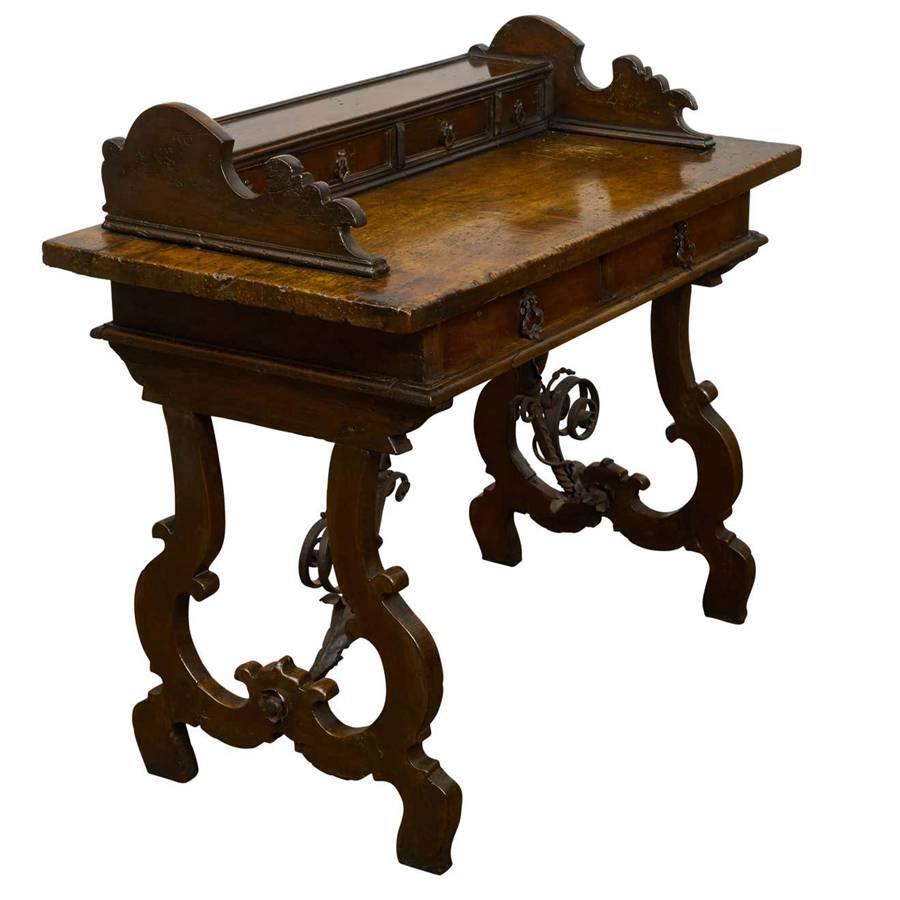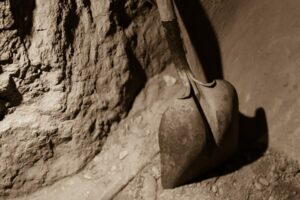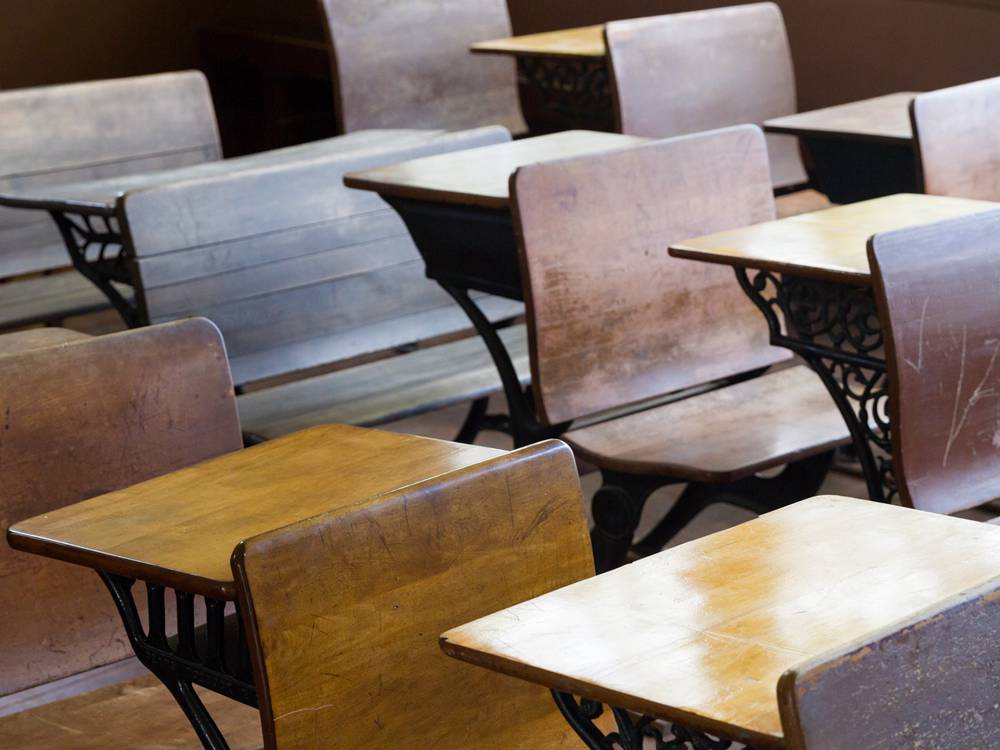
Antique school desks hold a special place in history, reminding us of the classrooms of the past and the educational journeys of our ancestors. You may stumble upon one of these fascinating pieces of furniture at a garage sale, antique shop, or even in your own attic. Identifying and determining the value of an antique school desk not only helps preserve its historical significance but also ensures that you know its worth in the ever-changing market.
When venturing into the realm of antique school desks, you’ll come across various materials, styles, and designs. Common materials include solid wood like walnut, oak, pine, and cherry, while others may be made of composite wood like ply or block board. Distinguishing between the two is essential, as it greatly affects the desk’s value. Examining features such as wear and tear, manufacturer’s labels, and unique design elements like metal legs, a hole in the center, rusted hinges, and a slanted surface will aid in identification as well.
Throughout this guide, you’ll learn how to identify and appraise antique school desks, with a focus on specific materials, styles, and historical periods. Armed with this knowledge, you can better understand and appreciate the beauty, craftsmanship, and nostalgic appeal that these charming relics possess.
Table of Contents
The History & Evolution of Antique School Desks
Antique school desks have a rich history that can be traced back to the 19th century. Initially, students used individual writing slates and sat on benches, which did not provide much comfort or support. With the growth of the education system and the need for better learning environments, the design and use of school desks evolved over time.
In the early days of school desks, you would find the wooden, cast-iron, and inkwell desks. Often, they were built with a foldable wooden seat attached to a cast-iron frame that supported a slanted writing surface with a small hole for an inkwell. These desks were popular across the United States and Europe throughout the 19th century. Later on, the popular desk designs included:
- Monitor Desks: These desks were designed to encourage better posture for students. The top surface would have a hinged, slanted panel for writing and reading, while the lower part would have compartments for supplies storage.
- Adjustable Desks: These desks were designed for flexibility in school classrooms. They allowed for adjustments in height, making it easier for students of different sizes and ages to use the same desk.
By the early 20th century, manufacturers began to focus on more ergonomic designs and classroom efficiency. This resulted in new materials, such as steel and laminate, being introduced to the construction of school desks. Some popular models from the 20th century include:
- One-Piece Desks: These desks combined the seat and writing surface into a single unit. This design made it easier to arrange and maneuver within the classroom. They were usually made from wood or metal.
- Wrap-Around Desks: These desks featured a curved writing surface that wrapped around the seated student, providing more space for books and supplies. The wrap-around design aimed to reduce body strain and encourage better organization during class.
As you explore antique school desks further, you can use these key features and designs to help identify and understand their history. Remember, the condition, rarity, and materials can all affect their value, so keep an eye out for unique and well-preserved pieces.
Identification of Antique School Desks
Styles
When identifying antique school desks, the first thing you should consider is the style. Each period had its distinctive style, and familiarizing yourself with these designs can help you in your search. Some popular antique desk styles include:
- Simple wood: This type of school desk typically features a wooden bench and a slanted surface for comfortable writing.
- Inkwell: Desks with an inkwell have a hole in the center of the writing surface, which was used to hold an ink container.
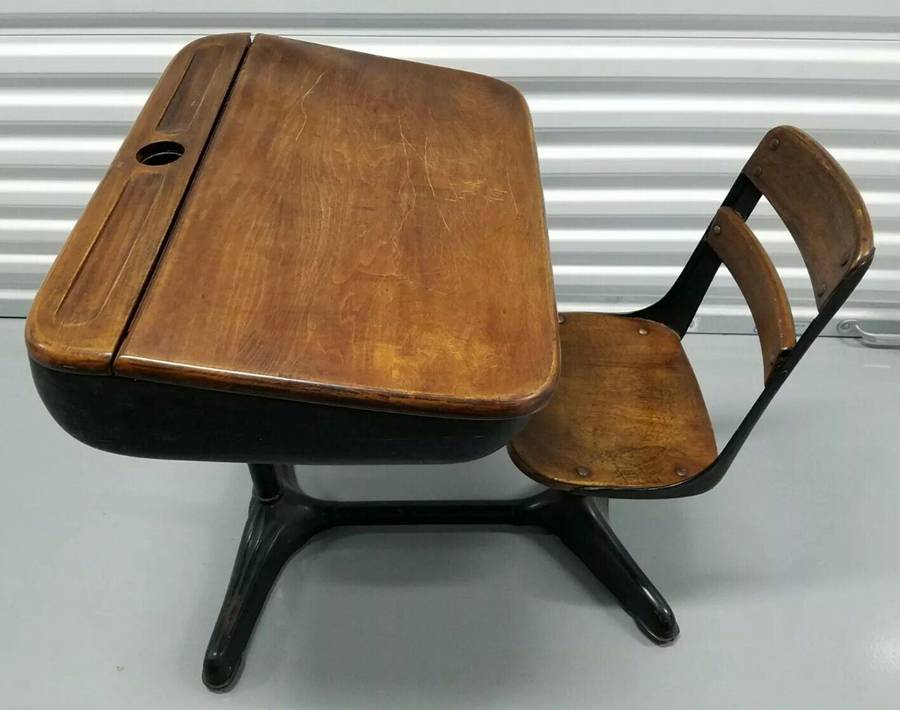
- Standing: Tall desks designed for use while standing, reflecting changes in teaching methods.
- Adjustable: Antique school desks with adjustable parts, such as height and angle, for personalized comfort.
- One arm: Aesthetic desk design with one arm, typically a cast iron arm, supporting a slanted surface.
Materials
The material of an antique school desk can give you an indication of its age and value. Common materials used in their construction include:
- Walnut: This high-quality wood was commonly used in antique school desks, prized for its strong and resilient properties. To identify if your desk is made from walnut, look for a deep, rich color and tight grain pattern.
- Oak: Another popular wood for school desks, oak is substantial and durable. Identifying oak desks can be done by their open grain and coarse texture, along with prominent growth rings.
- Cast Iron: Cast iron supports and hardware signify an older desk, more commonly seen in standing and one-arm styles. To determine cast iron supports, check for heavy metal surfaces with ornate designs or patterns, typically in a dark color.
Hardware
Examining the hardware on your antique school desk can also aid in identification and value estimation. Antique desks may feature metal components made from chrome, iron, or brass. Here are some hardware features to look for:
- Screws: Older desks often have slotted screws, while newer ones use Philips or Allen wrench designs.
- Hinges: Cast iron or brass hinges are indicative of older school desks. They may showcase ornate patterns or designs.
- Nameplates: Manufacturer’s labels or nameplates indicate the manufacturer, which can help you determine the age and origin of the desk.
By evaluating the style, material, and hardware of an antique school desk, you can confidently identify and appraise its value. Keep these factors in mind as you examine each piece of school furniture.
5 Common Styles of Antique School Desks
French-style School Desk
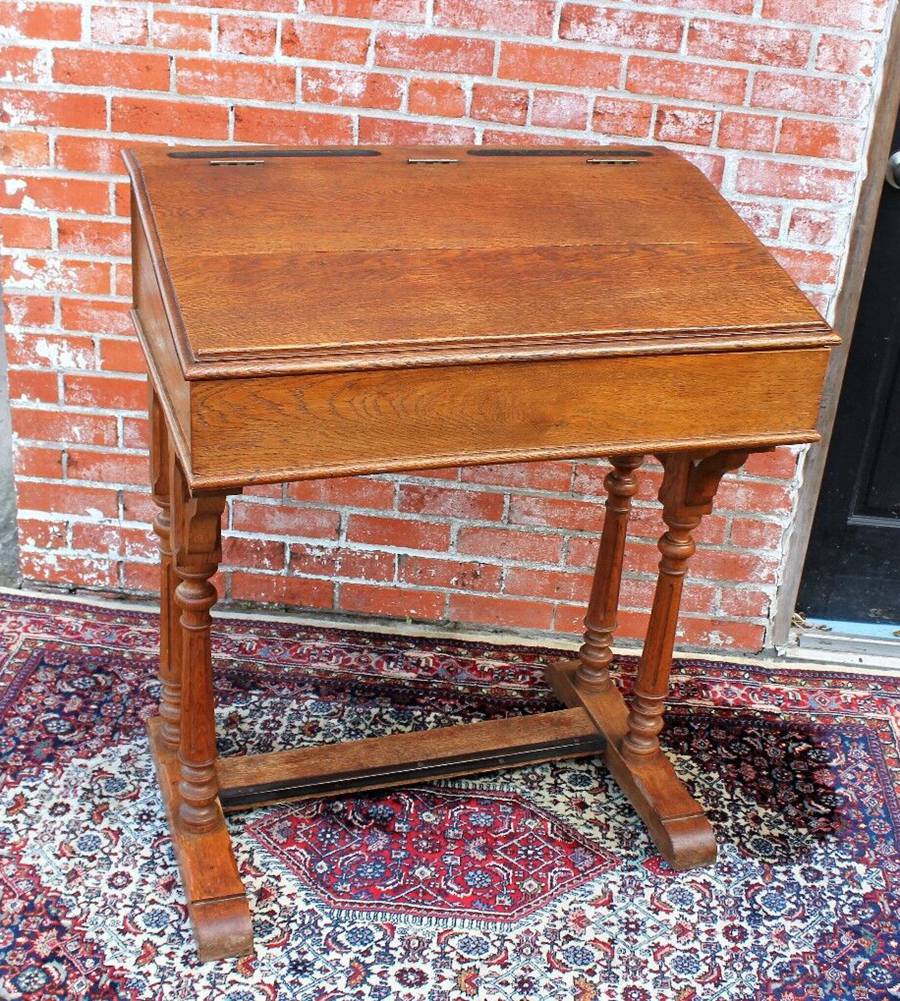
French-style school desks are known for their refined and elegant design. You will often find intricate carvings and decorations made with exotic woods like rosewood, tulipwood, and kingwood. These desks typically have a flip-top for storage and a separate chair.
German-style School Desk
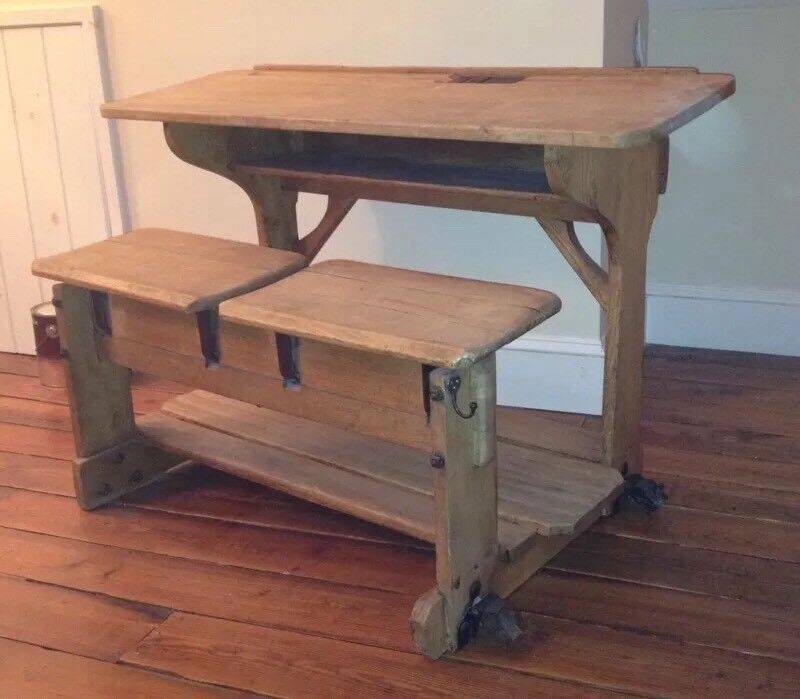
German-style school desks are characterized by their sturdy and practical construction. They often feature a combination of wood and metal materials. The desks usually have a built-in inkwell and a smooth writing surface for ease of use.
British-style School Desk
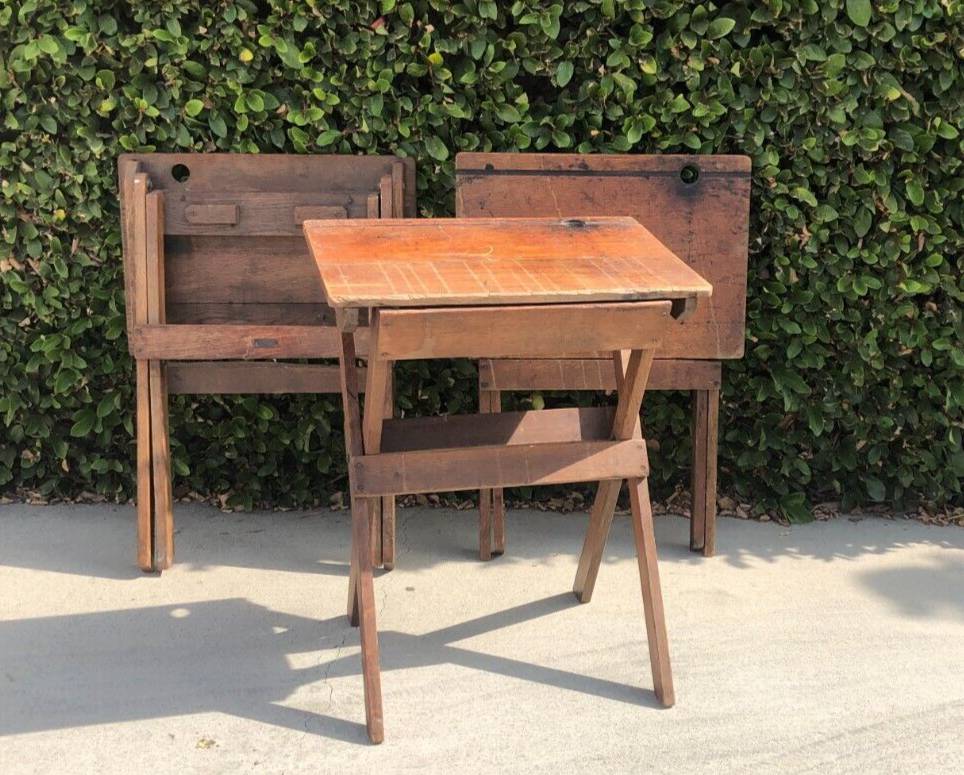
British-style school desks emphasize functionality and simplicity. They are usually constructed from cherry, maple, oak, or other hardwoods. These desks often have a lift-up lid for storage space and can be found with either individual seating or integrated chairs.
American Colonial-style School Desk
These school desks showcase early American craftsmanship with simple lines and minimal ornamentation. The materials are typically local hardwoods like maple or cherry. You might find wrought iron or brass hardware on these desks, along with an inkwell or small storage compartment.
Baroque-style School Desk
Baroque-style school desks are opulent and ornate, with intricate wood carvings and gilding. They often have elaborate curved legs and rich wood grains. These desks usually feature a writing surface that can be lifted to reveal storage space, along with a separate chair.
5 Factors to Identify & Value Antique School Desk
1. Age
When identifying and determining the value of antique school desks, one of the main factors you need to consider is age. Generally, the older the desk, the more valuable it is. In the world of antiques, a school desk is considered an antique if it is at least a century old.
School desks from different periods feature various characteristics, which can help you to determine their age. For instance, desks from the early to mid-20th century can be distinguished by their clean and simple lines, while those from earlier time periods are likely to showcase more intricate designs and craftsmanship.
You can also look for certain features to help identify the age of an antique school desk, such as metal legs, a hole in the center for inkwells, and a slanted writing surface. Another good indication of age is the presence of a manufacturer’s label, which may provide information on the date and place of manufacture.
Here is a table which shows how age affects the value of antique school desks:
| Age of Desk | Average Valuation |
|---|---|
| Less than 100 years old | $100 – $200 |
| 100-150 years old | $300 – $400 |
| 150-200 years old | $500 – $600 |
| 200+ years old | $700 – $1000 |
2. Brand
When identifying and valuing antique school desks, the brand plays a significant role in determining the overall worth. Various manufacturers produced these desks during different periods, with some brands commanding higher prices due to their rarity, craftsmanship, or historical significance.
Differentiating between brands often involves examining the desk construction, such as design and choice of material. Branded desks usually come with a manufacturer’s label or stamp, which can shed light on its age and origins. It is essential to familiarize yourself with popular brands and their specific features to make an informed decision when purchasing or appraising an antique school desk.
3. Materials
When identifying and appraising antique school desks, the materials used in their construction play a significant role in determining their value. Desks made from different materials exhibit unique characteristics and appeal to distinct collectors. In this section, you will learn about the common materials featured in antique school desks that impact their worth.
Wooden Desks
Wooden desks were prevalent in the past, and those made from hardwoods such as oak, walnut, or mahogany hold higher value due to their durability and quality. Here’s a valuation table for wooden antique school desks based on the type of wood:
| Wood Type | Average Valuation |
|---|---|
| Oak | $400 – 500 |
| Walnut | $450 – 550 |
| Mahogany | $550 – 700 |
Cast Iron Desks
Cast iron desks are also highly sought after by collectors, and the intricacy of their designs can positively influence their appraisal. Here’s a valuation table for cast iron antique school desks based on the design complexity:
| Design Complexity | Average Valuation |
|---|---|
| Simple | $300 – 400 |
| Moderate | $350 – 450 |
| Intricate | $450 – 550 |
Combination Desks
Some antique school desks feature a combination of materials, such as a wooden top and metal legs. These desks vary in valuation depending on design, condition, and the materials used. Here’s a valuation table for combination antique school desks:
| Materials Used | Average Valuation |
|---|---|
| Wood Top, Metal Legs | $350 – 450 |
| Metal Top, Wood Legs | $300 – 400 |
| Wood and Cast Iron | $400 – 500 |
4. Styles
When exploring antique school desks, you will come across several unique styles that can significantly impact their value. Understanding these styles, along with the characteristics that define them, will assist you in determining the value of antique desks in your collection.
Antique School Desk Styles
- Simple Wooden Bench: One of the earliest forms of school desks, dating back to the 19th century, is a basic wooden bench. These simple desks are typically found in solid wood materials such as walnut, oak, pine, and cherry.
- Skid Chair and Skid Table: This style, dating back to circa 1950, features a separate chair and desk along with a storage compartment. These desks are often made entirely of wood, making them easier for children to move around.
- Secretary Desks: Many antique secretary desks from the 1700s and 1800s feature exotic woods like rosewood, tulipwood, and kingwood. Later, cherry, maple, and oak hardwoods became more popular.
Here is a valuation table for the key styles of antique school desks affecting their value:
| Antique School Desk Style | Average Valuation |
|---|---|
| Simple Wooden Bench | $55 – 250 (Solid Wood) |
| Skid Chair & Skid Table | $70 – 200 (Composite Wood) |
| Secretary | $200 – 700 |
The materials used and the style of antique desks play a significant role in determining their value. Therefore, as a collector of antique school desks, comprehending these different styles will help you make more informed decisions in your collection.
5. Completeness
When it comes to Antique School Desks, the completeness of the item can have a significant impact on its value and appraisal. Completeness refers to the state of the desk, including the presence of all original parts, any restorations, and the overall condition of the desk.
An antique school desk with all its original parts intact, such as the inkwell, lid, metal legs, and hinges, will typically be more valuable than a desk missing any of these components. Additionally, desks that have undergone restorations, especially if the work was done professionally and maintains the original aesthetics, may have an increased value compared to those in poor condition.
Final Thoughts
In your quest to identify and determine the value of antique school desks, keep in mind several key factors. Firstly, examine the desk for signs of wear and tear, which can indicate its age. Look for the manufacturer’s label, as this will help you determine the date of manufacture.
Pay attention to the style and materials used, as different periods and countries had specific trends in desk design. For example, early antique school desks often featured metal legs, a hole in the center for an inkwell, a rusted hinge, and a slanted surface. Desks from the 1700s and 1800s may be made of exotic woods like rosewood, tulipwood, and kingwood, while later models used more common hardwoods like cherry, maple, and oak.
As you explore the world of antique school desks, keep in mind the following breadcrumbs:
- Check for signs of wear and tear
- Look for a manufacturer’s label
- Identify antique features like metal legs and inkwell holes
- Pay attention to the type of wood used
Familiarize yourself with the timeline of school desk designs, from simple wooden benches to 20th-century chrome styles. This will aid you in your search and allow you to better understand how styles evolved over time.
Remember that antique products generally refer to items at least 100 years old, but antique furniture pieces may be even older, dating back 400 – 500 years. Vintage items, on the other hand, range from the 1920s to the 1980s.
By following these guidelines and prioritizing accuracy and authenticity, you’ll be well-equipped to identify and assess the value of antique school desks for your collection or interior design project. Happy hunting!
FAQ
What are the general value ranges for antique school desks?
Here is a simple breakdown of the value of antique school desks based on their material type:
- Solid Wood (Walnut, Oak, Pine, Cherry):
- Desks with Attached Chairs: $55 – 250
- Desks with Detached Chairs: $70 – 200
- Composite Wood (Ply or Block Board):
- Desks with Attached Chairs: $55 – 100
- Desks with Detached Chairs: $60 – 150
Note: Large, branded solid wood desks can cost up to $1,700.
How do I identify an antique school desk?
To identify an antique school desk, consider the following features:
- Wear and tear: Examine the desk for signs of wear and tear, such as faded paint or ink stains.
- Manufacturer’s label: Check for any labels or inscriptions to determine the desk’s age and origin.
- Metal legs: Look for metal legs, which were commonly used in antique school desks.
- Hole in the center: Some antique school desks have a hole in the center of the desktop for holding inkwells.
- Rusted hinge: Check for rusted hinges, which may indicate the desk’s age.
- Slanted surface: Old school desks often have a slanted surface for writing.
How do I estimate the value of an antique school desk?
To estimate the value of an antique school desk, consider the following factors:
- Age: Older desks are generally more valuable than more recent ones.
- Condition: Desks in good condition without significant damage or wear will be worth more.
- Material: Desks made from high-quality wood or with unique features (such as branded designs) will have a higher value.
- Rarity: Rare or hard-to-find desks may fetch a higher price in the market.
Are there any particularly valuable types of antique school desks?
Yes, some antique school desks can be particularly valuable. For example, a vintage school desk made of Old Mission Oak might fetch at least $1,000 or more. Keep in mind that there is a difference between vintage designs from the first half of the 20th century and truly antique school desks that are at least 100 years old.

